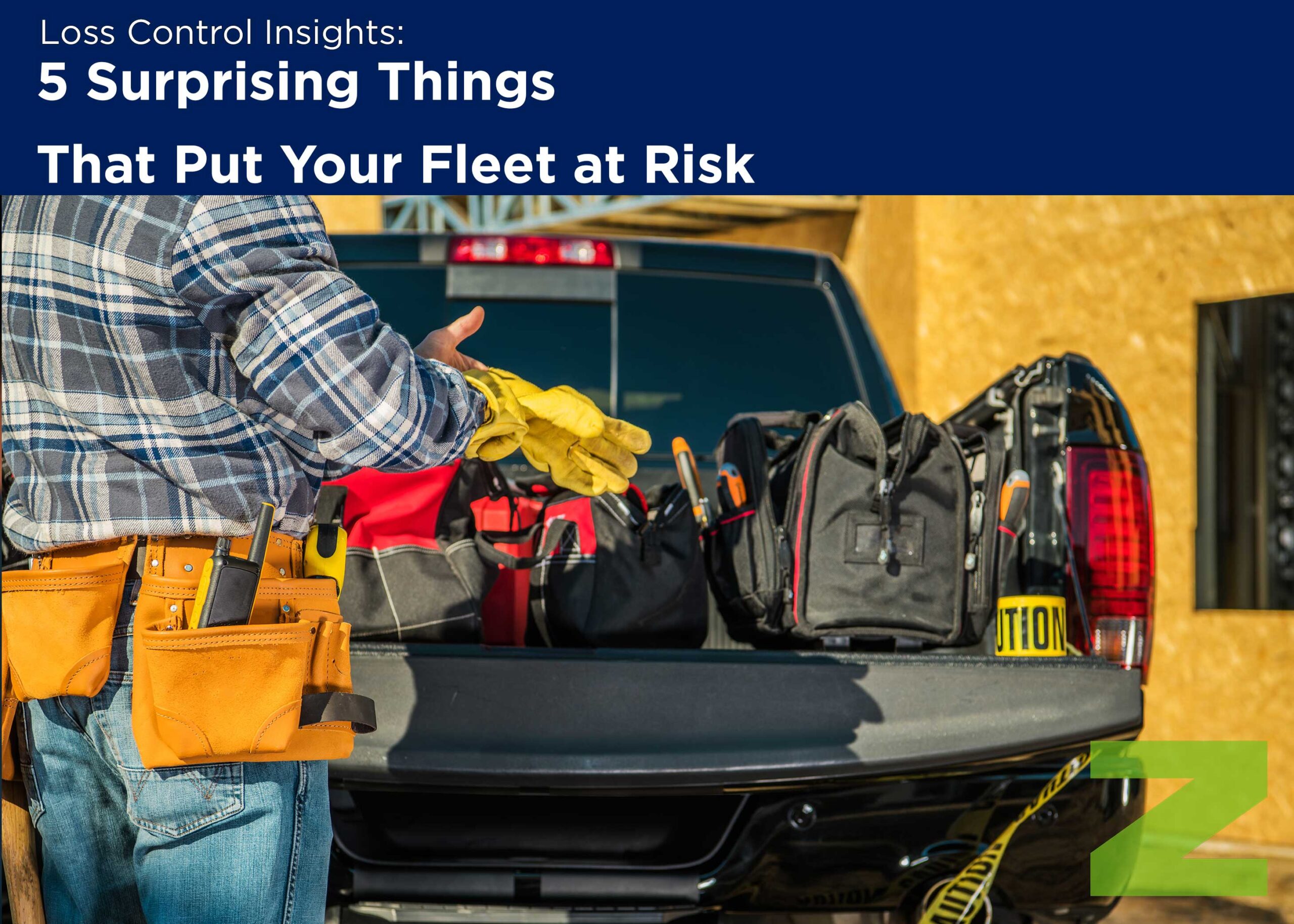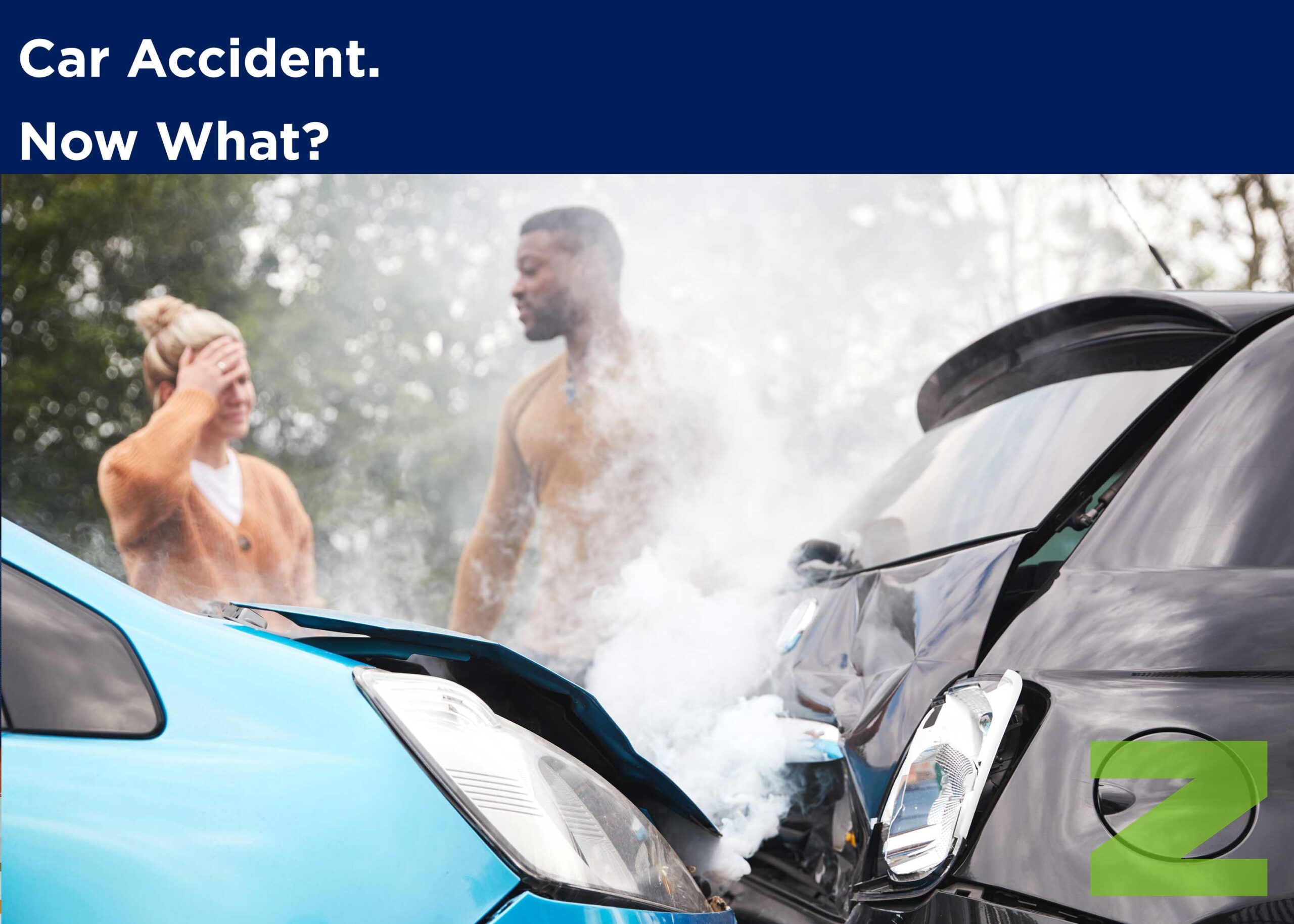Loss Control Insights for Contractors
5 Surprising Things That Put Your Fleet at Risk
Sometimes the dangers to your organization’s vehicles are obvious: a deer runs across the road in front of you, or you need to drive through an overhang with low clearance on the way into a worksite. But some hazards are not so easy to spot. Here are five less–obvious fleet risks that you should be prepared for.
Poorly Managed Personal Use
In many organizations that specialize in contract–type work, company trucks are assigned to employees like superintendents and foremen because they spend a lot of time driving from site to site on company business. This is a nice job perk for the employee, but if not managed appropriately this can quickly become a headache for the employer.
- Make sure employees understand that their company truck is not a gift. It’s an asset of the organization and should be treated as such.
- Establish clear boundaries and expectations for the use of company vehicles. Consider creating a personal use policy that outlines what activities are allowed (traveling to and from job sites, running business–related errands) and which are prohibited (using a company–owned truck to help a buddy move, going on a family vacation). Other things to address include seat belt use and operating the vehicle while fatigued or under the influence of alcohol, medications or other substances that might impair driving ability.
- Enforce the rules once you’ve set them. It’s a good idea to think in advance about consequences for violations, and it’s always good to check with legal counsel to make sure your policies are in–line with state and federal regulations.
Driving During Off Hours
Your jobs start early, and employees may be traveling several hours from their homes to get there. If they’re behind the wheel of a company vehicle during the very early hours of the morning or late at night, they face additional hazards that are less common during daytime driving.
- Fight fatigue that can make employees less alert. The peak period for sleepiness behind the wheel is midnight — 6 a.m., so encourage employees to avoid driving during these times whenever possible.
- Spend extra time prepping vehicles that are often driven in the dark. Realign headlights to make sure they are illuminating the right part of the road, and regularly check that headlights, directional signals and taillights are working.
- Watch for animal hazards, because deer and other kinds of wildlife are especially active around dawn and dusk.
Careless Driver Selection
Employees’ poor driving behaviors can put your company (and your company’s reputation) at risk. Make sure you don’t hand the keys to just anybody. We’ve got a full list of recommended driver qualification criteria, but these points are especially key:
- A valid driver’s license is a must–have item for anyone driving one of your vehicles. Make sure they have one.
- A clean motor vehicle record (MVR), because past behavior is the best indicator of future behavior.
- A clean drug/alcohol test, especially if your company’s vehicles are considered commercial vehiclesby the DOT.
- For heavy trucks and trucks pulling trailers, the driver needs to have the appropriate commercial driver’s license.
Need a hand making sure your drivers have got the right stuff? Consider subscribing to a driver monitoring service that will run initial MVRs and send alerts when a driver receives a violation. EMC Insurance policyholders can get discounted driver monitoring services from SuperVision.
Confusion about the Rules
In larger organizations, it’s common for confusion to occur between the people that manage drivers and fleet vehicles. The person in charge of safety might think a certain set of driver selection criteria are being followed, but the human resources area may be using completely different guidelines when they actually do the hiring.
As a best practice, get together at least annually (more is better) with HR, safety/loss control and your fleet manager. Make sure everyone is on the same page about your fleet safety program and who is cleared to drive company vehicles. This is also a great time to update your driver list.
Distracted Driving
Distracted drivers put themselves, your vehicles and the general public at risk. To minimize distraction, ban the use of electronics (tablets, phones, etc.) while behind the wheel of a company vehicle. Creating a distracted driving policy, and asking employees to acknowledge it, is a good way to ensure employee awareness.





